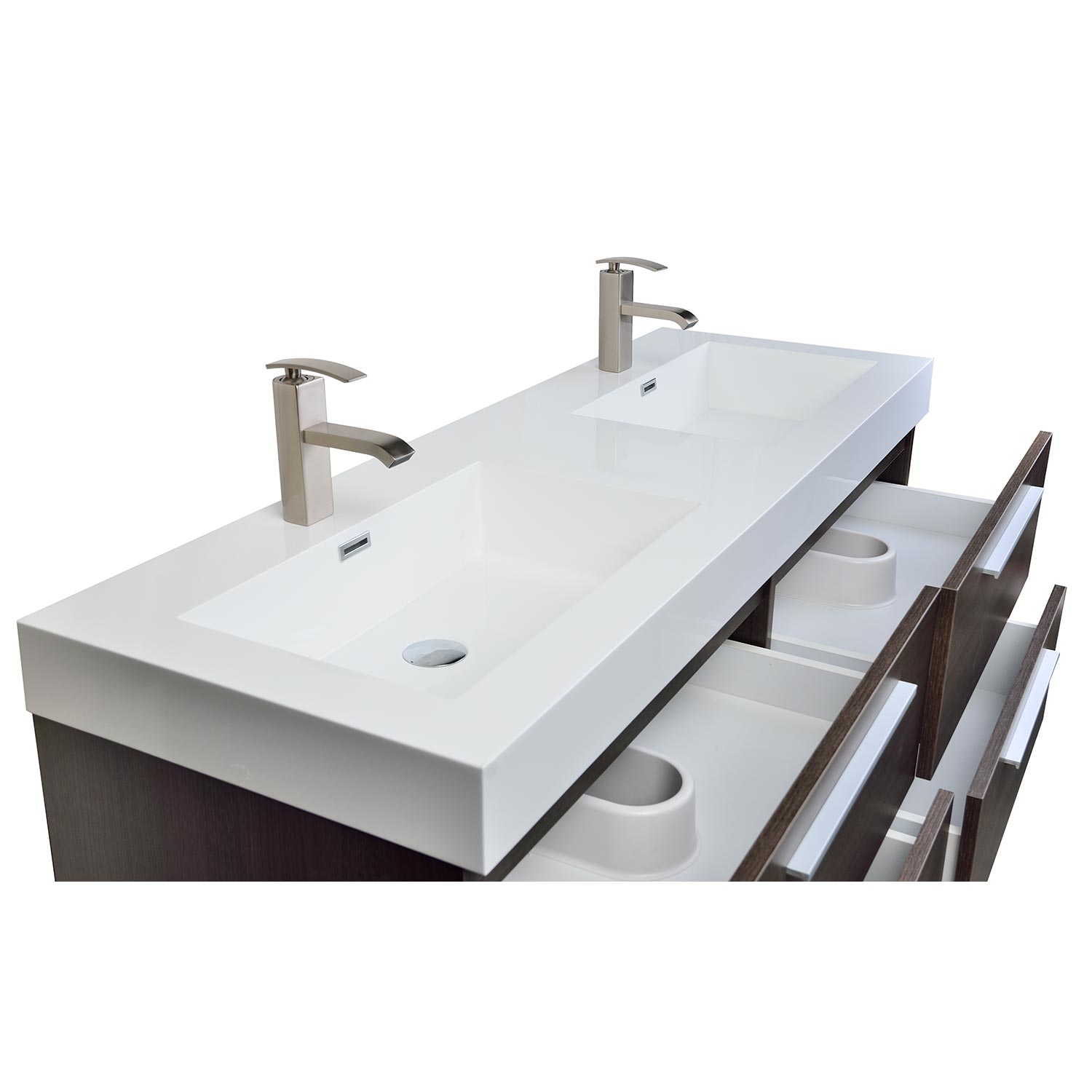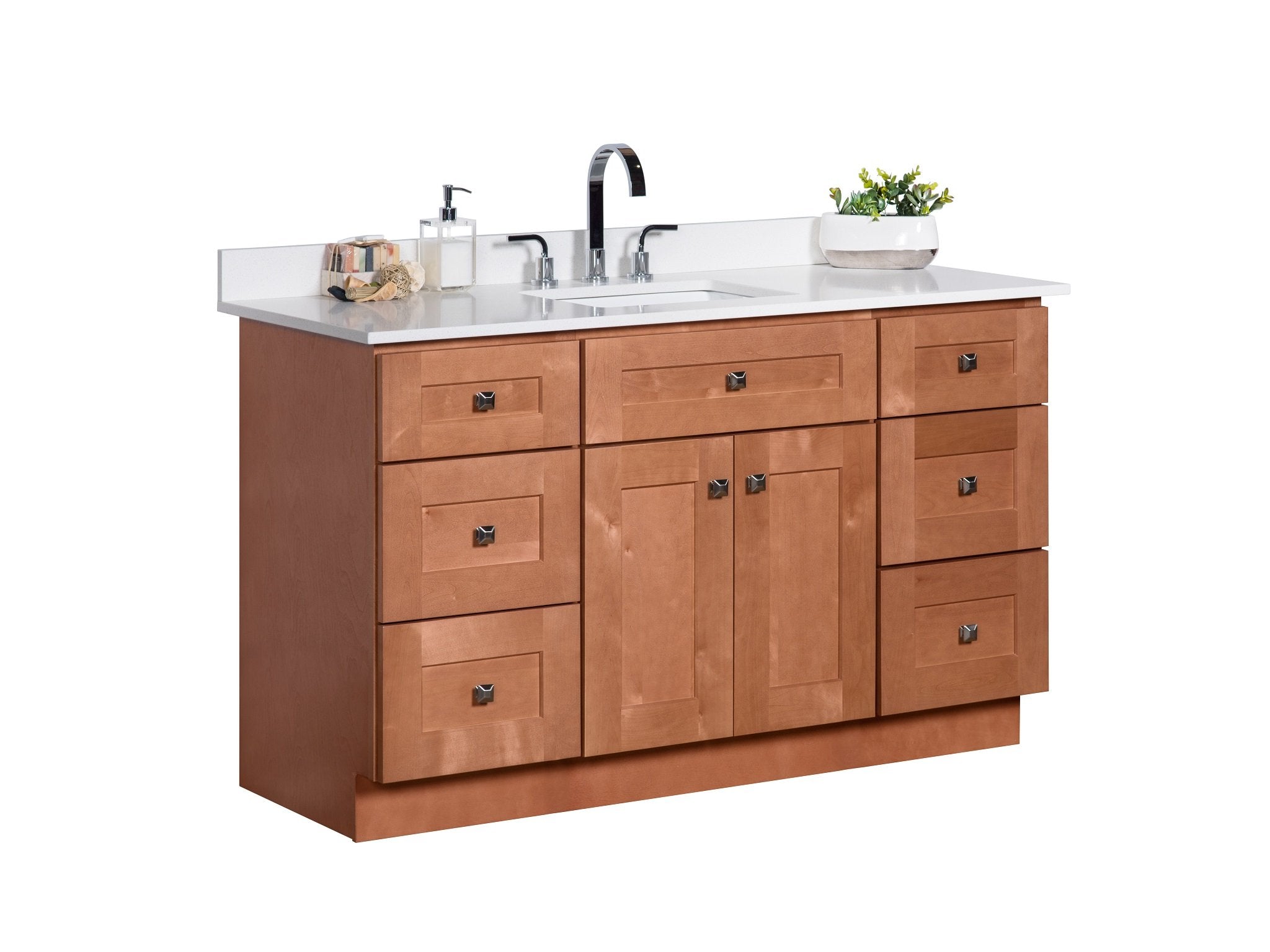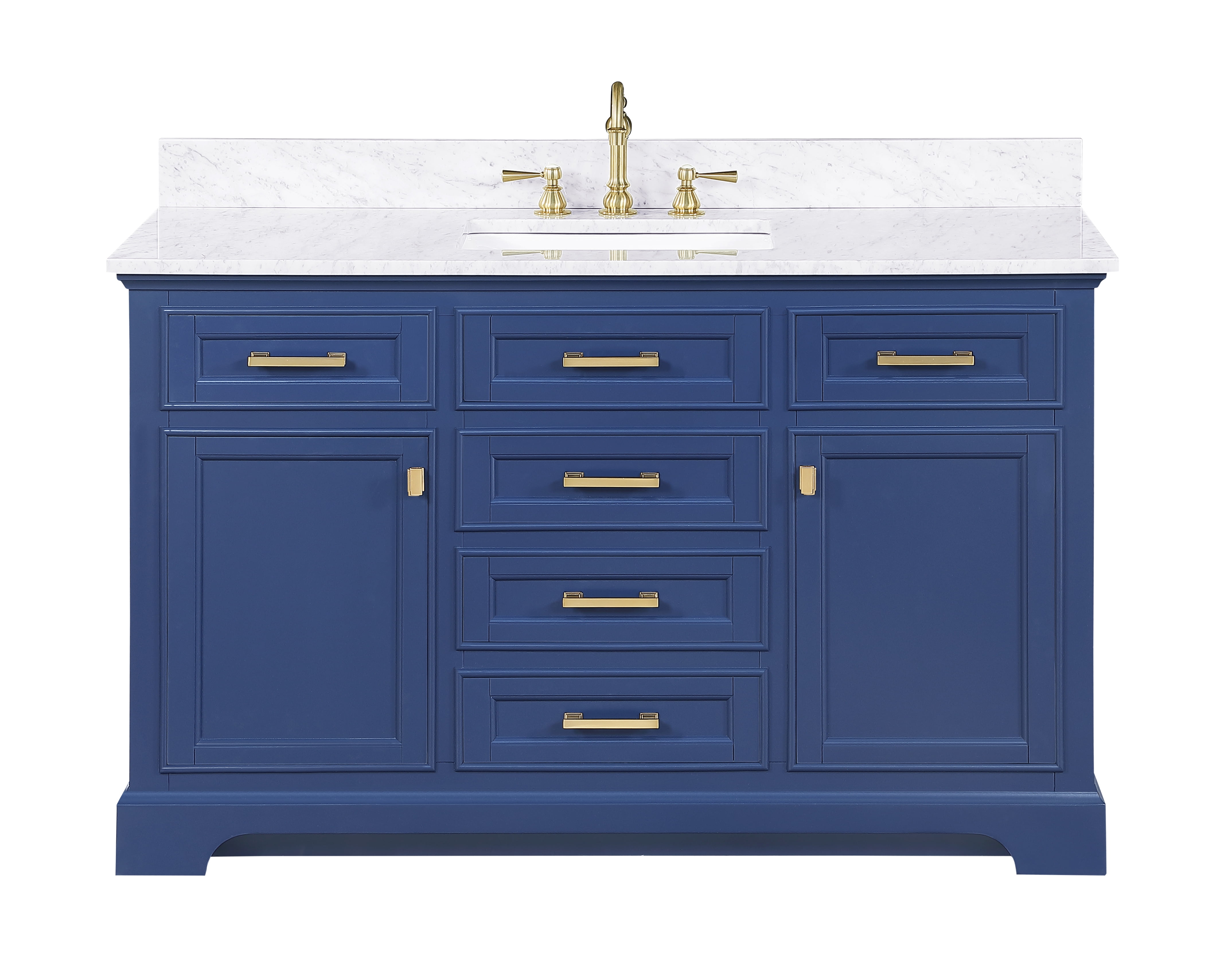Choosing the Right 54 Inch Bathroom Vanity

A 54-inch bathroom vanity offers ample storage and counter space, making it a popular choice for larger bathrooms. However, choosing the right vanity requires careful consideration of several factors to ensure it meets your specific needs and complements your bathroom’s style.
Space Considerations
Before purchasing a 54-inch bathroom vanity, it is essential to measure the available space in your bathroom. Ensure there is enough room for the vanity, including any doors or drawers that open. Consider the distance from the vanity to other fixtures, such as the toilet and shower, to ensure comfortable movement and easy access.
Style and Design
The style and design of the vanity should complement the existing bathroom decor. A traditional bathroom may benefit from a vanity with ornate details and classic finishes. A contemporary bathroom, on the other hand, may prefer a sleek and minimalist design.
Vanity Materials
The material of the vanity plays a crucial role in its durability, aesthetics, and price. Here are some popular materials for 54-inch bathroom vanities:
- Wood: Wood vanities offer a natural, elegant look and are highly durable. However, they can be more expensive than other materials and require regular maintenance to prevent scratches and water damage. Popular wood choices include oak, maple, cherry, and walnut.
- Laminate: Laminate vanities are an affordable and durable option. They are available in a wide range of colors and patterns, mimicking the look of natural materials like wood or stone. Laminate is resistant to moisture and scratches, making it a practical choice for bathrooms.
- Ceramic: Ceramic vanities offer a sleek and modern look. They are resistant to moisture and stains, making them easy to clean. However, ceramic vanities can be more expensive than laminate vanities and may be more susceptible to chipping or cracking.
Features
When choosing a 54-inch bathroom vanity, consider the features that are important to you.
- Storage Space: A 54-inch vanity offers ample storage space, but consider your specific needs. Do you need a lot of drawers or shelves? Look for vanities with features like built-in organizers, pull-out drawers, and adjustable shelves to maximize storage.
- Drawers: Drawers provide easy access to your bathroom essentials. Consider the number and size of drawers needed to accommodate your items.
- Shelves: Shelves are ideal for storing towels, toiletries, and other bathroom items. Look for vanities with open shelves or enclosed cabinets for different storage options.
Popular 54-Inch Bathroom Vanity Styles
Here are some popular 54-inch bathroom vanity styles to consider:
- Traditional: Traditional vanities often feature ornate details, such as carved moldings, decorative hardware, and classic finishes like brushed nickel or oil-rubbed bronze. These vanities typically have a more formal and elegant look.
- Contemporary: Contemporary vanities are characterized by sleek lines, minimalist designs, and modern finishes like chrome or satin nickel. These vanities often feature clean-cut edges and geometric shapes.
- Modern: Modern vanities are similar to contemporary vanities but often incorporate more bold and innovative designs. They may feature unique materials, unconventional shapes, and statement-making hardware.
- Farmhouse: Farmhouse vanities are inspired by rustic charm. They often feature distressed wood, metal accents, and simple, functional designs. Farmhouse vanities typically have a warm and inviting look.
Installation and Customization: 54 Inch Bathroom Vanity Without Top

Installing a 54-inch bathroom vanity without a top involves careful preparation, secure installation, and proper plumbing connections. Once installed, you can customize it to match your bathroom’s style and preferences.
Vanity Installation
Before installing the vanity, ensure you have the necessary tools and materials. This includes a level, tape measure, drill, screwdriver, plumbing tools, and appropriate fasteners.
- Preparation: Begin by clearing the area where the vanity will be installed. Remove any existing fixtures or debris. Ensure the floor is level and the walls are plumb.
- Installation Process: Place the vanity in its desired location and mark the wall where the mounting brackets will be attached. Drill pilot holes for the mounting brackets and secure them to the wall using appropriate fasteners. Attach the vanity to the mounting brackets, ensuring it is level.
- Connecting Plumbing: Once the vanity is installed, connect the plumbing system. This involves connecting the water supply lines to the vanity’s faucets and attaching the drain line to the drain pipe. Ensure all connections are secure and leak-proof.
Customization
Customizing your vanity can make it a unique centerpiece in your bathroom. You can add a countertop, install hardware, and incorporate lighting to enhance its appearance and functionality.
- Adding a Countertop: Choose a countertop material that complements the vanity’s style and meets your needs. Popular countertop materials include granite, quartz, marble, laminate, and solid surface.
- Installing Hardware: Select drawer pulls, cabinet knobs, and other hardware that match your bathroom’s design aesthetic. Install the hardware using appropriate tools and fasteners.
- Adding Lighting: Install lighting fixtures that enhance the vanity’s appearance and provide adequate illumination for grooming. Consider using sconces, under-cabinet lights, or a combination of both.
Countertop Material Guide
| Material | Advantages | Disadvantages | Suggested Vanity Style |
|---|---|---|---|
| Granite | Durable, heat-resistant, scratch-resistant, unique patterns | Expensive, porous, requires sealing | Traditional, modern, farmhouse |
| Quartz | Durable, non-porous, scratch-resistant, variety of colors | Expensive, can be susceptible to staining, less natural appearance | Modern, contemporary, transitional |
| Marble | Elegant, unique veining, luxurious appearance | Porous, easily scratched, requires sealing | Traditional, classic, ornate |
| Laminate | Affordable, durable, easy to maintain | Less durable than natural stone, can be susceptible to scratches and water damage | Contemporary, modern, minimalist |
Maintenance and Care

A 54-inch bathroom vanity without a top, while stylish and functional, requires proper maintenance to ensure its longevity and beauty. Regular cleaning, protection of the finish, and timely troubleshooting of any issues are essential.
Cleaning and Sanitizing, 54 inch bathroom vanity without top
Regular cleaning and sanitizing are crucial for maintaining a hygienic and visually appealing bathroom vanity.
- Wipe down the vanity daily with a damp cloth to remove dust and any spills. You can use a mild soap or a specialized bathroom cleaner.
- Sanitize the vanity weekly by using a disinfectant spray or wipes. This helps to eliminate bacteria and germs. Ensure the disinfectant is compatible with the vanity’s finish.
- Clean the hardware regularly, such as the handles and hinges. Use a polishing cloth or a mild soap and water to keep them sparkling.
- Avoid using harsh chemicals or abrasive cleaners as they can damage the finish of the vanity.
Protecting the Finish
Protecting the finish of your vanity is vital to prevent damage and maintain its beauty.
- Apply a sealant or wax to the vanity’s surface, following the manufacturer’s instructions. This creates a protective barrier against water, stains, and scratches.
- Use coasters or placemats under any items you place on the vanity, such as toiletries or decorative items. This prevents scratches and water rings.
- Avoid placing hot items directly on the vanity, as this can cause discoloration or damage. Use trivets or heat-resistant pads.
- Wipe up spills immediately to prevent staining.
Troubleshooting Common Issues
Understanding common issues and how to address them can help you maintain your vanity’s functionality.
- Leaks: If you notice leaks, check the plumbing connections and tighten any loose fittings. If the leak persists, you may need to call a plumber for professional assistance.
- Scratches: Minor scratches can be removed with a polishing compound or a touch-up paint that matches the vanity’s finish. For deeper scratches, consult a professional refinisher.
- Loose hardware: Tighten any loose screws or hinges. If the hardware is damaged, replace it with new components.
Lifespan of Vanity Materials
The lifespan of a bathroom vanity varies depending on the material used.
- Wood: Well-maintained wooden vanities can last for decades, but they require regular maintenance to prevent warping, cracking, and moisture damage.
- Laminate: Laminate vanities are durable and resistant to moisture, making them a good choice for bathrooms. They can last for several years with proper care.
- Acrylic: Acrylic vanities are easy to clean and maintain. They are also resistant to scratches and stains. They can last for several years with proper care.
Essential Maintenance Checklist
Regular maintenance is key to extending the life of your vanity. Here’s a checklist of essential tasks and their recommended frequency:
| Task | Frequency | Supplies |
|---|---|---|
| Daily Cleaning | Daily | Damp cloth, mild soap or bathroom cleaner |
| Sanitizing | Weekly | Disinfectant spray or wipes |
| Hardware Cleaning | Monthly | Polishing cloth or mild soap and water |
| Sealant or Wax Application | Every 6 months | Sealant or wax, application cloth |
| Inspection for Leaks | Monthly | None |
| Inspection for Loose Hardware | Monthly | Screwdriver |
